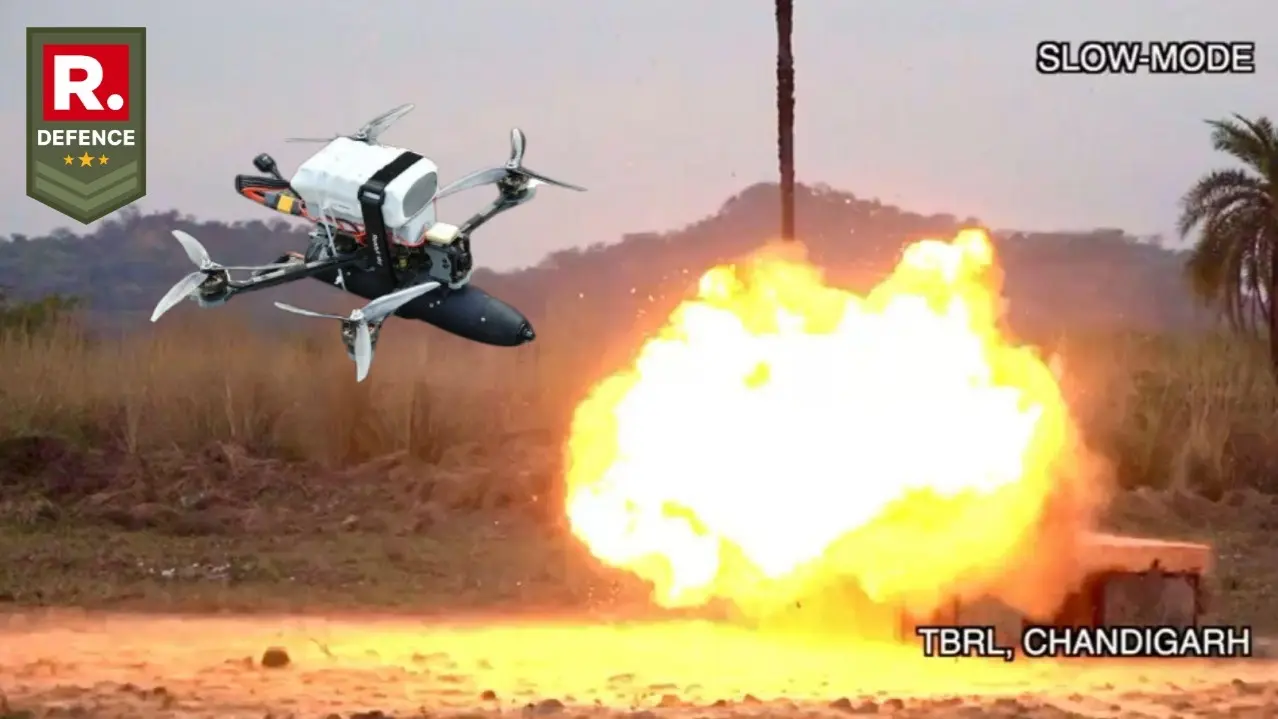Updated 28 March 2025 at 16:17 IST
Indian Army Deploys First-of-Its-Kind Kamikaze FPV Drone in Pathankot Trials
In a first for the Indian military, the Fleur-De-Lis Brigade has successfully tested a First Person View (FPV) kamikaze drone armed with an anti-tank munition.
- Defence News
- 3 min read

Pathankot, Punjab – In a significant leap for battlefield tactics, the Indian Army’s Fleur-De-Lis Brigade has successfully tested a First Person View (FPV) drone armed with a kamikaze-role anti-tank munition—a first for the Indian military. The test, conducted in the Pathankot sector, is a major step toward integrating low-cost, high-impact aerial strike systems into modern warfare.
This isn't just another drone project. It's a homegrown breakthrough, developed in collaboration with DRDO’s Terminal Ballistics Research Laboratory (TBRL), Chandigarh. The project kicked off in August 2024 with a singular aim—create a weaponized FPV drone that can take down enemy armour with precision strikes. After months of research, development, and testing, the results are finally in.
Drones Built by Soldiers, For Soldiers
Unlike off-the-shelf drone systems, this kamikaze FPV drone was entirely assembled in-house at the Rising Star Drone Battle School, a specialized unit under the Fleur-De-Lis Brigade. In fact, by March 2025, the formation had already fabricated over 100 drones, showcasing the Army’s capability to design, build, and deploy its own UAVs—without relying on external suppliers.
This self-reliant approach ensures total control over build quality, component integration, and last-minute battlefield tweaks based on real-time inputs from TBRL experts. The result? A highly manoeuvrable, precisely engineered drone optimized for structural integrity, weight balance, and deadly efficiency in combat.
Advertisement
Built to Strike, Engineered for Safety
A major concern with kamikaze drones is safety. No one wants an armed drone misfiring mid-air. To counter this, the Army has incorporated a dual-safety mechanism, ensuring the munition stays inactive during transport, handling, and flight—a game-changer in drone warfare reliability.

The trigger system is another innovation. Unlike makeshift attack drones with rudimentary detonation triggers, this one is securely armed and deployed only under strict, controlled conditions. The pilot has full control via a radio controller, eliminating premature detonations and ensuring precision strikes.
Advertisement
Adding another layer of control is a real-time feedback relay system, which transmits live payload status updates directly to the pilot’s FPV goggles. Every move is calculated, every strike deliberate.
Tested, Validated, and Ready for Action
This FPV kamikaze drone wasn’t rushed into action. It underwent a series of rigorous trials to ensure it performs flawlessly under combat conditions. These included Explosive Testing (To assess impact effectiveness), Aerial Vehicle Assessments (Testing agility, flight endurance, and real-time manoeuvrability) and Trigger System Evaluations (Ensuring precise payload activation only when commanded). Each phase was closely monitored and validated by DRDO’s TBRL scientists, cementing the drone’s status as a battle-ready asset.

With tensions across borders and unmanned systems increasingly defining modern warfare, this homegrown kamikaze FPV drone is set to become a force multiplier for the Indian Army. Fast, lethal, and built for destruction, it gives mechanized infantry a new edge in anti-tank warfare.
Beyond its immediate combat applications, this project signals a larger shift—one where the Indian Army isn’t just buying technology, but building it from the ground up. With the Fleur-De-Lis Brigade leading the charge, India’s future in indigenous drone warfare is only just beginning.
Published By : Yuvraj Tyagi
Published On: 28 March 2025 at 16:17 IST
